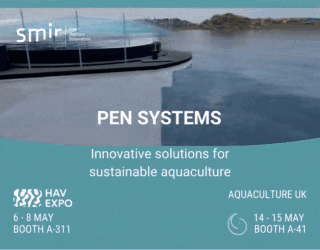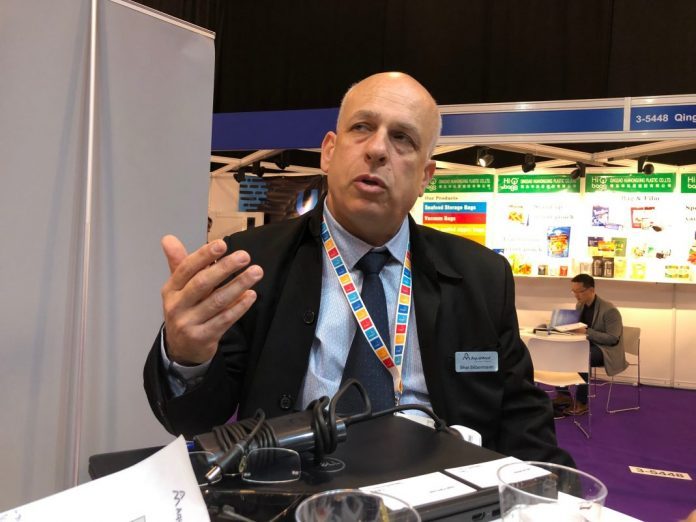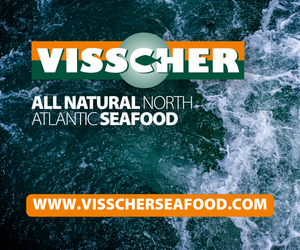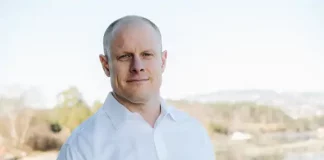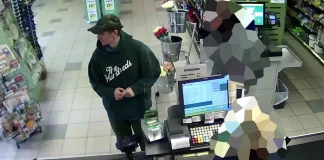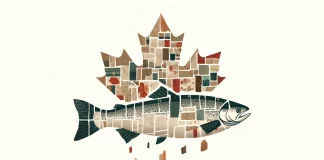Israel’s AquaMaof assures they can produce salmon on land for just three dollars per kilo.
“I recently watched a documentary on National Geographic that dealt with the first planes, with the Wright brothers. Already there was interest in jet engines, but they did not have the technology and it was, in any case, cheaper to build propeller aircraft. But now no one is building propeller aircraft anymore, now everything is jets.”
Shai Silbermann chooses to rely on a metaphor to illustrate their main product’s – recirculation plants – position in the market. Silbermann is the marketing director of hard-working AquaMaof, the Israeli company that makes its mark by building more and more land-based salmon farms – across the globe.
The company’s showcase is Global Fish, the fish farm in Plonsk, northwest of Warsaw, Poland.
“We have already started selling five kilos of fish from there. We even have a few individuals over nine kilos,” he said eagerly.
In the desert
SalmonBusiness met AquaMaof at this year’s big Seafood Expo in Brussels which is taking place this week.
“Our DNA comes from fish production. In Israel, we do not have much water. It is also a country with large temperature differences. In winter, there is snow in northern Israel, while in summer it is warm and up to 40 degrees. We started producing fish, based on technology that we imported from other countries – all over the world. But eventually, we chose to develop our own technology. Ten years ago we started with RAS (recirculation technology). Now we have one plant in the Negev desert and one in Poland, Global Fish,” said Silbermann.
AquaMaof is primarily engaged in the design, planning and construction of RAS facilities.
“We have built two RAS plants in Russia, two in Japan, one in Poland, one in Germany, one in Canada,” said Silbermann.
The latter is for Grieg NL and is a large-scale facility. The others are fish farms.
“We also have a contract in Chile and in the Far East. It’s not just salmon, but salmon is our speciality. We also have facilities for grouper, trout, catfish and others. RAS is flexible; both salt water and fresh water. Global Fish started with tilapia, a tropical fish, but we converted to salmon,” he explained.
Partner
In Global Fish, AquaMaof has now received a financial partner with the private equtiy fund, 8F.
“We sold 50 per cent of Global Fish to 8F. They wanted the whole thing, but we wanted to keep it as a training and R & D centre for our customers,” continued Silbermann.
AquaMaof is not a pure technology provider. They run a model where they also often enter with ownership records in the facilities they build.
“It’s a strategy for the company. We want to invest directly in the fish farming companies,” explained Silbermann, adding that AquaMaof is a private partner company.
The big question for all land-based salmon farms is, of course, which production cost one can produce fish for.
“It is dependent on aquaculture, but for salmon we can produce fish for three dollars per kilo. There is direct cost, live fish in tank, excluding sales and harvesting costs.”

“For the past ten years, we have realized that the future is RAS,” said CEO David Hazut.
“We started with small projects, around 500 tonnes. We now produce plants of 3.5 or 10,000 tonnes (annual fish production – ed. Note). We have built facilities for 30-35,000 tonnes. Most are salmon, 90 percent of them are. In total, these facilities cost USD 240 million to build,” he said.
Many options
Hazut does not want to state how much the company is converting a year, with reference to it being privately owned. However, he doesn’t exclude the idea of the company entering the stock exchange.
“Now we are privately owned, but we have many options. It is impossible to say,” he said
How would you describe the competition in the market for the production of RAS plants?
“There is not much competition. There are a few, four to five, at our level. But demand is enormous, absolutely overwhelming,” he answered.
In particular, stakeholders in overseas countries are demanding such facilities.
“All places that are far from Norway and Chile are good markets. Even in Israel, one can sell salmon for USD 12 per kilo. It is the same in Africa, Japan and China. The question is whether we can deliver. We have proven in Poland that we can produce 6-7 kilos of salmon. We have more than ten projects in different stages. Not everyone is salmon, but many of them are,” he said.
Money is no bottleneck for good projects.
“There is a huge amount of money in the world,” says Hazut, continuing: “Customers also have money, or they can be funded by others. Of course, these are not cheap projects, but the return on invested capital is good due to profitability,” said Hazut.
Mortality has long been a challenge for land-based salmon. AquaMaof claims that this is not a problem for them.
“We have very low mortality. RAS offers the best possible conditions all the time, so mortality is very low. Under five percent,” assured Hazut.


